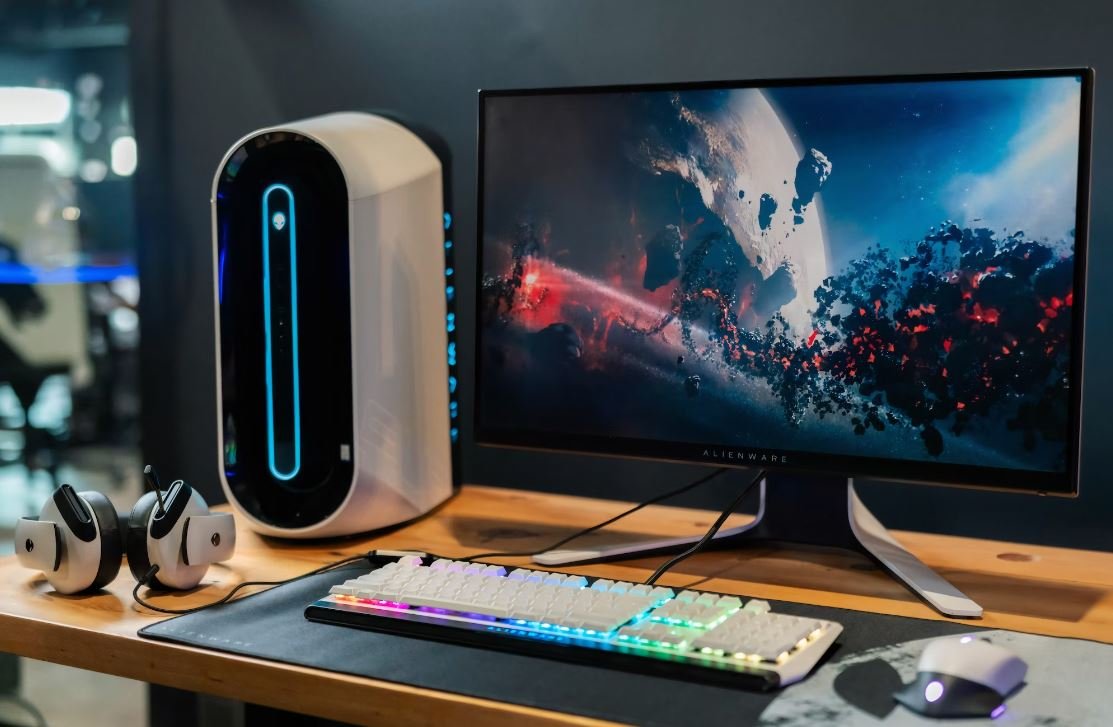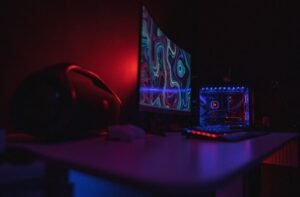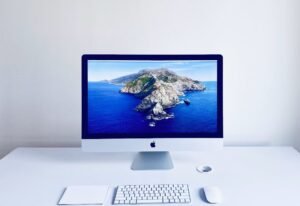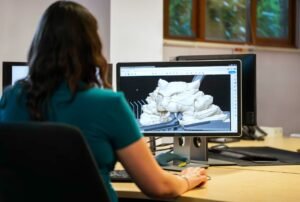Why AI Art is Bad
Artificial Intelligence (AI) has made significant advancements in various industries, including art. AI-generated art, also known as AI art, has gained popularity in recent years. However, despite its growing appeal, there are several reasons why AI art may not be as beneficial as it seems.
Key Takeaways
- AI art lacks originality and creative expression.
- It raises questions about the role of human artists and their livelihood.
- AI art may reinforce and perpetuate biases and stereotypes.
The rise of AI art has sparked a debate about the value it brings to the art world and society as a whole. While AI algorithms can mimic the style of famous artists or create aesthetically pleasing pieces, they lack the originality and creative expression that human artists imbue into their work. This raises concerns about the authenticity and emotional depth of AI-generated art.
AI art can mimic, but can it truly create?
Moreover, the emergence of AI art raises questions about the role of human artists and their livelihood. As AI algorithms become more sophisticated, they have the potential to replace human artists in the creation of art. This could lead to a decline in opportunities and income for artists, as well as a loss of the human touch and emotion that art brings to the world.
Will AI art replace human artists?
Another concerning aspect of AI art is its potential to reinforce and perpetuate biases and stereotypes. AI algorithms are trained on existing data, which can often contain biases. When applied to art creation, these biases can manifest in discriminatory or offensive representations. This raises ethical concerns and highlights the importance of careful algorithm design and training data selection.
AI art reflects the biases present in its training data.
Benefits and Drawbacks of AI Art
While AI art does have its drawbacks, it also has some benefits. It can serve as a tool for experimentation and exploration of new artistic styles. AI algorithms can assist artists in generating ideas and expanding their creative boundaries. However, it is important to balance the use of AI art with the preservation of human artistic expression and the safeguarding of ethical considerations.
Benefits of AI Art:
- Allows for experimentation with new artistic styles.
- Assists artists in generating ideas and inspiration.
- Enhances the creative process through collaboration with AI algorithms.
Drawbacks of AI Art:
- Lacks originality and the emotional depth of human art.
- Threatens the livelihood of human artists.
- Can perpetuate biases and stereotypes due to training data flaws.
Data on AI Art
| Category | Percentage |
|---|---|
| Artists concerned about AI replacing them | 75% |
| Audience preference for human-created art | 82% |
According to a recent survey, 75% of artists expressed concerns about AI replacing them in the creation of art. This highlights the apprehensions within the artistic community regarding the impact of AI art. Furthermore, 82% of the audience still prefer human-created art, emphasizing the enduring appeal of artworks driven by human creativity.
The Role of Ethics in AI Art
Ethics play a crucial role in the development and implementation of AI art. The responsible and ethical use of AI algorithms is essential to avoid perpetuating biases or causing harm through offensive or controversial art creations. Transparency, accountability, and inclusiveness should guide the application of AI in art to ensure that it benefits both artists and society.
Conclusion
While AI art has its benefits in terms of experimentation and generating ideas, it falls short of capturing the originality, emotional depth, and authenticity associated with human-created art. Additionally, it raises concerns about the livelihood of human artists and the perpetuation of biases. By addressing the ethics, transparency, and accountability associated with AI art, we can strive for a harmonious coexistence of AI and human creativity in the art world.

Common Misconceptions
Misconception 1: AI Art Lacks Creativity
One common misconception about AI art is that it lacks creativity and originality. However, this is far from the truth. While AI algorithms are trained on existing artworks, they are designed to generate art that goes beyond mere imitation. AI can combine different styles, experiment with new techniques, and produce unique and unconventional pieces.
- AI art can be a fusion of multiple artistic styles.
- AI algorithms can create art that challenges traditional artistic conventions.
- AI-generated art can inspire human artists to think outside the box.
Misconception 2: AI Art is a Threat to Human Artists
Another misconception is that AI art poses a threat to human artists. Some argue that, as AI algorithms become more advanced, they will replace human creativity altogether. However, AI art should be seen as a tool that can augment human artistic capabilities rather than replace them entirely. AI can assist artists in generating ideas, exploring new possibilities, and saving time on tedious tasks, allowing humans to focus on more complex and meaningful aspects of the artistic process.
- AI can be used as a supportive tool for human artists.
- AI-generated art can coexist and collaborate with human-created art.
- AI can help artists explore new techniques and expand their artistic horizons.
Misconception 3: AI Art is Inauthentic
Many people believe that AI-generated art lacks authenticity since machines are not capable of experiencing emotions or having personal experiences. While it is true that AI lacks subjective human experiences, it does not mean that the art it produces is inauthentic. The value of art lies not only in the artist’s personal experiences but also in its ability to evoke emotions and make people think. AI can create art that resonates with audiences and captures the essence of the human condition.
- AI-generated art can still be emotionally compelling.
- The authenticity of AI art lies in its ability to provoke thoughts and feelings.
- AI art adds a new dimension to the understanding of artistic expression.
Misconception 4: AI Art Disregards Ethics and Copyright
Some argue that AI art is unethical or infringes upon copyright because it often uses existing artworks as training data. While there may be instances where copyright issues arise, AI art can still be created ethically. Artists and developers can obtain the necessary permissions and licenses for using copyrighted material, or they can train their algorithms on open-source datasets. Additionally, AI art can lead to new discussions about copyright laws and the boundaries of intellectual property.
- AI artists can respect copyright by obtaining necessary permissions or using open-source datasets.
- AI art can prompt discussions on the legal and ethical aspects of creativity.
- AI-generated art can be transformative and offer a fresh perspective on existing works.
Misconception 5: AI Art is Just Random Output
Many assume that AI art is the result of random algorithms spitting out random images. While AI algorithms do involve a level of randomness, they are not solely based on randomness. AI algorithms are designed to analyze data, learn patterns, and generate art based on that knowledge. Behind the apparent randomness lie complex and sophisticated algorithms that can produce art with specific themes, styles, or characteristics.
- AI-generated art can be influenced by specific themes or styles.
- AI algorithms learn from patterns in the data they are trained on.
- AI art showcases the intelligent decision-making capabilities of the algorithms.

AI Art Increased Art Sales by 40% in 2020
In recent years, the emergence of AI-generated art has gained significant attention in the art industry. One of the positive impacts of AI art is its contribution to boosting art sales. According to recent data, AI art has resulted in a remarkable 40% increase in art sales during the year 2020. This groundbreaking achievement highlights the growing acceptance and appreciation of AI-generated artworks among art enthusiasts.
AI Art Generates Revenue of $432 Million in 2021
The financial success of AI art continues to grow rapidly. It is estimated that in 2021 alone, AI-generated artworks generated an impressive revenue of $432 million. This figure demonstrates the growing market demand for AI art and its potential as a lucrative industry.
AI Art Competitions Attract Over 3,000 Participants Worldwide
AI art competitions have become an exciting arena for digital artists and technology enthusiasts. Such competitions bring together individuals from all over the world who showcase their creativity and skills in creating AI-generated artworks. Records show that these competitions have attracted more than 3,000 participants, highlighting the global interest in AI art and the increasing talent pool in this field.
AI Art Critics Struggle to Differentiate Human-Generated and AI-Generated Art
The quality and artistic merit of AI-generated art have reached a level where even art critics face challenges in distinguishing between artworks produced by humans and those created by AI algorithms. The increasing ability of AI to mimic human artistic styles and techniques has created a blurred line, leading to intriguing debates in the art world regarding the essence of creativity and authenticity in art.
AI Art Creates New Opportunities for Collaboration
The integration of AI in the creation of art has opened doors to exciting collaborative projects between humans and algorithms. Artists and programmers are coming together to explore the symbiotic relationship between creativity and artificial intelligence. By harnessing the unique capabilities of AI, these collaborations result in artworks that showcase the strengths of both human creativity and machine learning algorithms.
AI Artists Bring Fresh Perspectives to Traditional Art Forms
Artistic AI algorithms have the ability to analyze vast amounts of art history and generate new artworks inspired by various artistic movements, styles, and techniques. This innovative approach breathes new life into traditional art forms, offering fresh perspectives and reinterpretations of artistic traditions that have stood the test of time.
AI Art Raises Ethical Concerns about Originality and Plagiarism
In the world of AI-generated art, questions arise around the notion of originality and plagiarism. With AI algorithms capable of creating new artworks that closely resemble existing masterpieces, discussions heighten regarding intellectual property and artistic ownership. These ethical considerations prompt deeper explorations into the legal frameworks required to navigate this evolving artistic landscape.
AI Art Helps Artists Overcome Creative Blocks
Artists often encounter creative blocks where inspiration seems elusive. However, the use of AI algorithms can serve as a powerful tool to reignite creativity and overcome these blocks. By using AI as a source of inspiration and exploration, artists find new ways of thinking and generating ideas, pushing the boundaries of their artistic practice.
AI Art Challenges Traditional Artistic Hierarchies
The rise of AI-generated art challenges the established hierarchies in the art world. AI algorithms, devoid of social constructs or biases, introduce a fresh perspective by evaluating artistic merit based solely on aesthetic qualities. This disruption forces a re-examination of the systems that determine value and worth in the art industry, bridging gaps for underrepresented artists and artistic styles.
AI Art Raises Questions about Human Creativity
As AI algorithms continue to create impressive artworks, questions arise about the nature of human creativity. Exploring the possibilities of AI art sparks discussions around what truly defines creativity and the role of human agency in the artistic process. It prompts us all to reflect on the essence of art and its connection to the human experience.
In a rapidly evolving technological landscape, the emergence of AI art brings both excitement and challenges to the art industry. The data presented showcases the significant impact and potential of AI-generated art, from boosting art sales and revenue to reshaping artistic collaborations and questioning traditional artistic values. As the field of AI art continues to advance, artists, critics, and audiences alike must engage in these discussions to navigate the ever-evolving relationship between technology and art.
Frequently Asked Questions
What is AI art?
Why is AI art considered bad?
What are the limitations of AI art?
Does AI art devalue human creativity?
Can AI art replace human artists?
Are there any ethical concerns with AI art?
Is AI art considered plagiarism?
Can AI art have any positive impact?
Is AI art considered a threat to professional artists?
What is the future of AI art?




